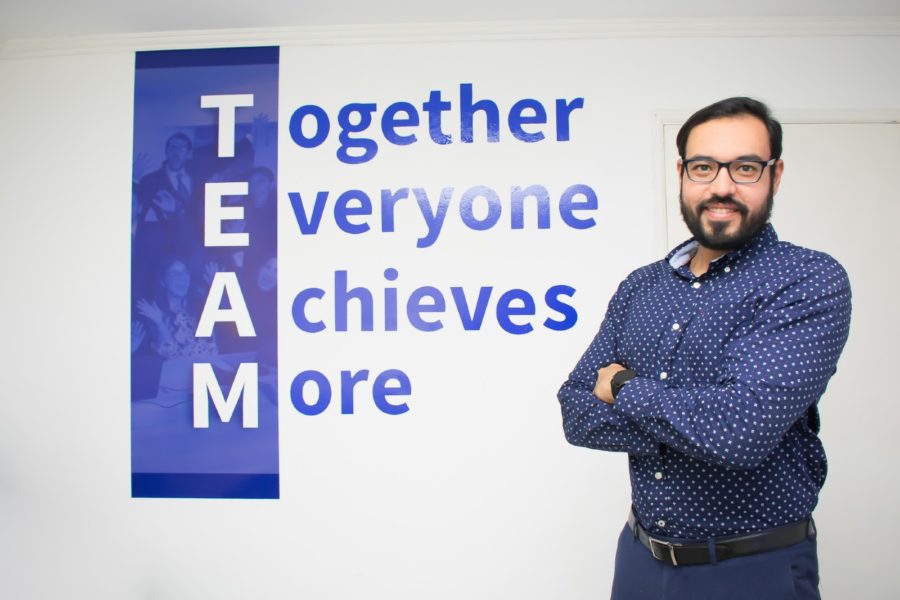“It’s not about working hard, but working smart”.
These are words that I constantly hear our CEO say. These words emphasize that it is not about overworking yourself, but about knowing what needs to be done first, and learning how to do it efficiently.
Many CEOs are not aware of this mindset and give their teams too many tasks with too little time to complete them. Ultimately, not allowing employees to reach their goals.
If your team is constantly not reaching its goals, maybe it’s not about the team, but about the goals themselves. Not knowing how to establish goals for your team and dropping many random tasks at them will have consequences, such as a drop-down in quality, teams losing focus, higher rates of absenteeism, and low morale.
To avoid this, and increase workplace productivity at the same time, you need to start improving your communication strategy to one that improves your employee experience. For that, you need to begin nurturing your employees from the moment they come in, in other words, the onboarding process. Once that’s settled, continue by aligning company goals to individual goals and do so in an engaging and informative way throughout an employee’s career. Then look at how you can establish an efficient work environment, empower employees to be productive, and reinforce employees’ well-being through the programs and services you offer.
Sounds like too much work?
Let’s go through them step by step so that you can have a better understanding of how to boost workplace productivity.
How to Boost Workplace Productivity.
1. Onboard Effectively:
Imagine showing up for your first day at work and you have no idea about what to do. This is something that should never happen when you start working at a new company.

Communicating effectively during onboarding puts employees on a path of workplace productivity from the first moment they start working for an organization. Effective communication during onboarding can set the tone for the employee’s entire career.
This is your chance to make an impression that stays with new employees for the duration of their careers. Effective onboarding also increases the chances that an employee will stay with the organization.
One of the things we are proud of is our low turnover rate. We can confidently say that employees that go through our great onboarding process are more likely to stay in our organization for at least 2 years.
Using employee communication software or other preferred systems to communicate roles, responsibilities, and critical organizational information during the onboarding process has the potential to make a difference in workplace productivity immediately and for the employee’s entire tenure with an organization.
If you want to know more about the onboarding process make sure to read: Onboarding: Why Do We Do It?
2. Align Company Goals with Individual Goals
Communication doesn’t stop after onboarding. You and your team have to work together to pursue common goals that align with the mission of the company.
Since employees and managers are always going to be working together, you must strive for building an organization that has a strong way of communication between senior management and general staff, where they constantly communicate goals, hurdles, and updates with each other.
To avoid a feeling of separation or disengagement, organizations must continue to connect with employees. Alignment around organizational goals encourages employees to develop a sense of ownership and support for those goals that can:

- Reinforce accountability
- Identify gaps to address
- Support a culture driven by teamwork
With the value that aligning goals brings to an organization, the focus should be for employees, leaders, and managers to regularly receive updates and communicate with each other about how their personal goals contribute to company goals.
Actively talk about how broader outcomes and initiatives are supported and impacted by each person’s contributions. Ideally, organizations should have an employee engagement program in place to make it easy for the organization to communicate consistently to all employees in a way that not only informs them but inspires them as well.
3. Build an Efficiency Focused Work Environment
The work environment you create should support efficient processes which lead to improved workplace productivity.

Think about the environment in terms of comfort: is it clean, appealing, and comfortable? At the most basic level, are employees’ physical needs met with easy access to store their lunch, access water, and use the restroom? Do they have access to current equipment and systems that make it easy to be productive, or are they stuck with outdated programs that require workarounds and create frustration?
Once all these basic environmental issues are dealt with, you’ll see a high increase in productivity.
And remember that the work environment is not only physical but psychological.
Just as the physical environment impacts productivity, so does the psychological environment. It’s important to assess how engaged employees are with their colleagues. Do they have people with whom they feel a genuine sense of connection at work? Are teamwork and cross-functional projects a way that work gets done, or are business units working in silos? If the psychological environment doesn’t meet employee needs, it’s much more difficult for them to be effective and efficient which makes workplace productivity suffer.
The workplace environment isn’t just about having comfortable chairs or a space that has plenty of light—although that doesn’t hurt—it’s about reviewing employee needs and adjusting the environment to support those needs.
4. Empower your Employees
Employees working in an organization in which mistakes are not allowed are often overly cautious. They don’t want to risk making a mistake that could bring ridicule or embarrassment. When employees hold back in this way, their potential is also limited. That’s why in recent years there’s been a lot of discussions about permitting employees to fail.

When you punish failure, you also disincentivize exploring new ideas, which can halt creativity and limit success. When you help your employees shift their beliefs about failure and empower them to make mistakes and learn, performance and productivity will be improved.
Also, remember to listen to employee comments about getting work done. When they routinely complain of not having enough time in the day to get their work done, it’s a sign that unproductive practices may have become the norm.
Put in extra effort to limit practices such as micromanagement, endless meetings, and ineffective email communications. Individually these distractors may seem insignificant but combined they represent hundreds or even thousands of hours of lost productivity.
5. Invest in Well-Being
Unhealthy, exhausted employees are in no position to be productive. While you can’t force healthy habits on anyone, you can do your part to make investments that help employees. If you’re not already offering well-being programs, or if you’re looking for something new, consider these options:

– Access to an onsite gym, or local fitness facility.
– Vending machines with healthy snack and beverage choices.
– Yoga, meditation, and other mindfulness workshop offerings.
– Private wellness rooms where employees can recharge by taking a nap or taking a break.
– Flexible work arrangements such as flex days or telecommuting.
Make sure supervisors and managers also establish reasonable standards for their teams when it comes to well-being. These leaders not only set the expectations for productivity but also serve as role models for what’s required to get work done. Make sure employees are allowed sufficient time to disconnect from work. Regularly review time off records to ensure employees use their paid time off to take a break. When people take time away, they return to the job ready to contribute and produce what’s needed.
Productivity means an increase in output. If employees’ well-being is suffering, it’s next to impossible for them to produce more for your organization. Help them prioritize their well-being and you’ll boost productivity, too.
Educate your employees
Organizations that are successfully tackling workplace productivity challenges have realized that the employee communication strategies and workplace practices of the past don’t work today. If workplace productivity is your goal, you must inform and educate employees with engaging, interactive, and consistent content from day one.





